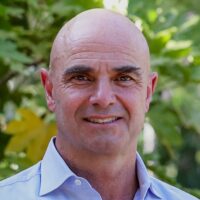If a new Sonoma Valley Hospital gets built on the outskirts of town, what happens to the existing hospital on Andrieux Street?
That likely will be influenced by covenants, codes and restrictions, or CCRs, written years ago when the Sebastiani family donated the land on Andrieux Street on which the existing hospital building sits.
The hospital site is part of the Sebastiani subdivision, which was established in 1948. And the CCRs in the deeds of 120 nearby residents say that the current hospital site can only be used for a hospital, or for single-family homes.
During the Measure C campaign, the hospital’s failed bond proposal to build a new, $148 million facility, officials proposed selling the Andrieux Street property to be developed as single-family housing.
But the land’s future use has a little more flexibility than what’s spelled out in the neighbors’ deeds.
That’s according to Mary McEachron, an attorney with the legal firm Hanson Bridgett, who does work for the hospital. McEachron discussed potential uses for the current hospital site at the Aug. 21 meeting of the Sonoma Valley Health Care Coalition, an ad hoc group that hopes to get a new earthquake-ready hospital built to replace the current building, which the state may close in 2013 because it doesn’t meet seismic safety standards.
Eminent domain, or the power of government agencies to buy land at market rate from unwilling sellers, was one of McEachron’s topics.
Eminent domain was used in the spring as an epithet by opponents of Measure C when the hospital proposed building the new facility on a picturesque Fifth Street West hayfield owned by the Leveroni family, an unwilling seller.
But — strange as it may sound — eminent domain might be necessary if the existing hospital was razed and the Andrieux Street site was turned into a city park.
If a park were built, neighbors opposed to it could sue, McEachron said, and a jury would have to decide how much the neighbors’ property values would diminish due to the CCRs being broken to allow a park’s construction.
But in that case, the neighbors probably wouldn’t get a dime, she said.
“Most juries would say, you are (crazy) to pay the (neighbors),” McEachron said.
If the hospital wanted to convert the use of the existing facility to, say, a medical office building, it would be up to a judge to determine whether that fits the CCRs, McEachron said. But a judge might be inclined to see a medical office building as allowable, she said.
“A hospital’s going to be whatever a judge decides it’s going to be,” she said on Aug. 21 to the audience of about 70 people at the health care coalition’s meeting at the Vintage House senior center.
Richard Kirk, M.D., a candidate for the hospital board, on Aug. 21 cautioned people about the old CCRs at the Sebastiani subdivision: While the circa-1948 CCRs forbade uses other than a hospital or single-family homes, the restrictions also — as was common practice in those days — prohibited non-whites from living there, unless they were servants living with the white homeowner or tenant.
And McEachron shared a cautionary tale about government bodies taking a hard line against the use of eminent domain.
She said the Rancho Sante Fe School District in Southern California has been trying for nine years to buy land for a new school, but hamstrung itself by vowing not to use eminent domain.
“It made it impossible to acquire land,” McEachron said.
The school district encompasses almost 11 square miles of land in which it couldn’t find a site to build a new school, she said.
At one point, the school district was poised to pay more than market value for a site, until the State Court of Appeals shot that down, deeming it to be a “gift of public funds,” McEachron said.
“I think the moral of the Rancho Santa Fe School District… is in a logical, coherent, well-planned community, there are times when you use eminent domain,” McEachron told the Sun.




